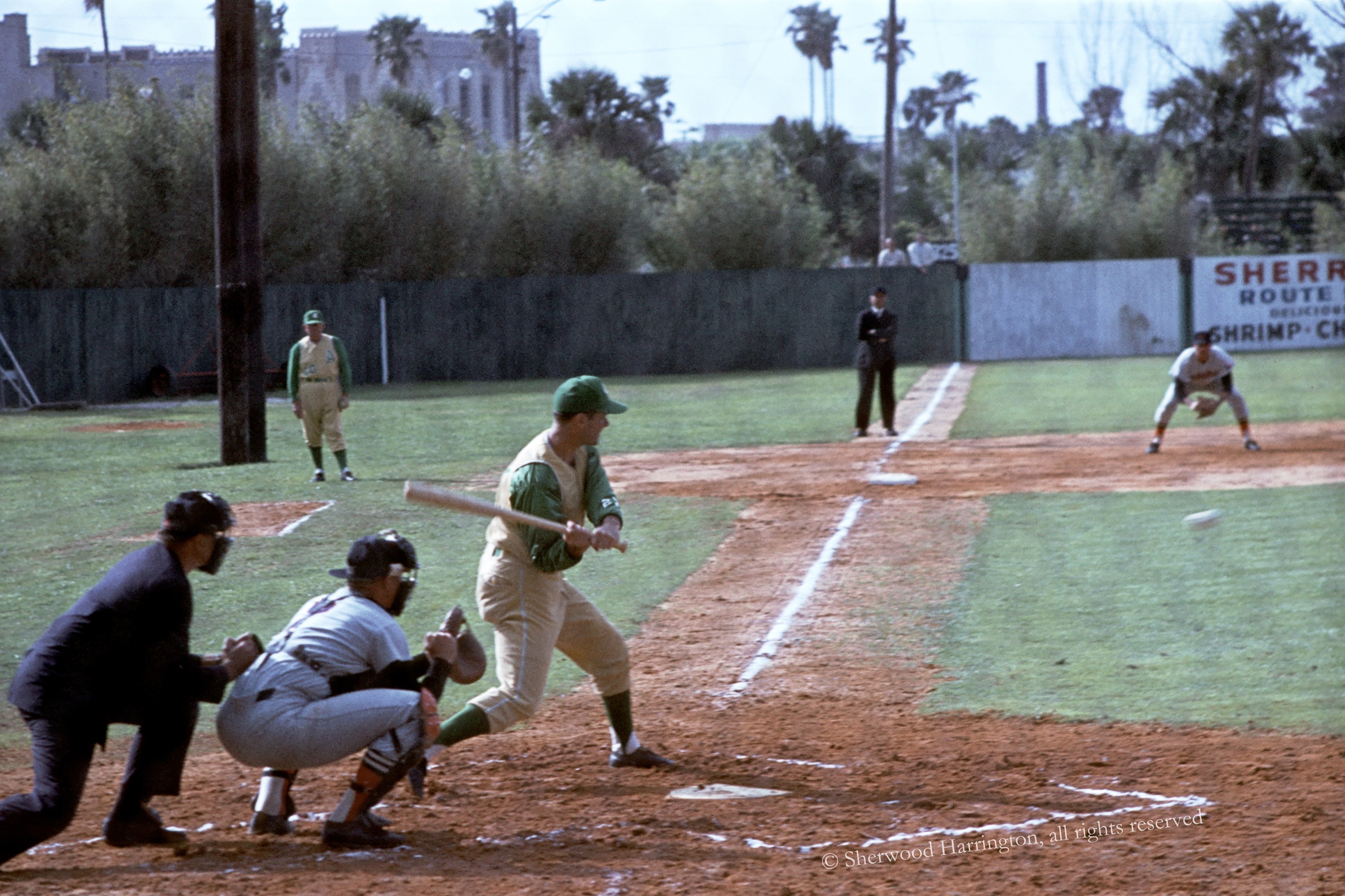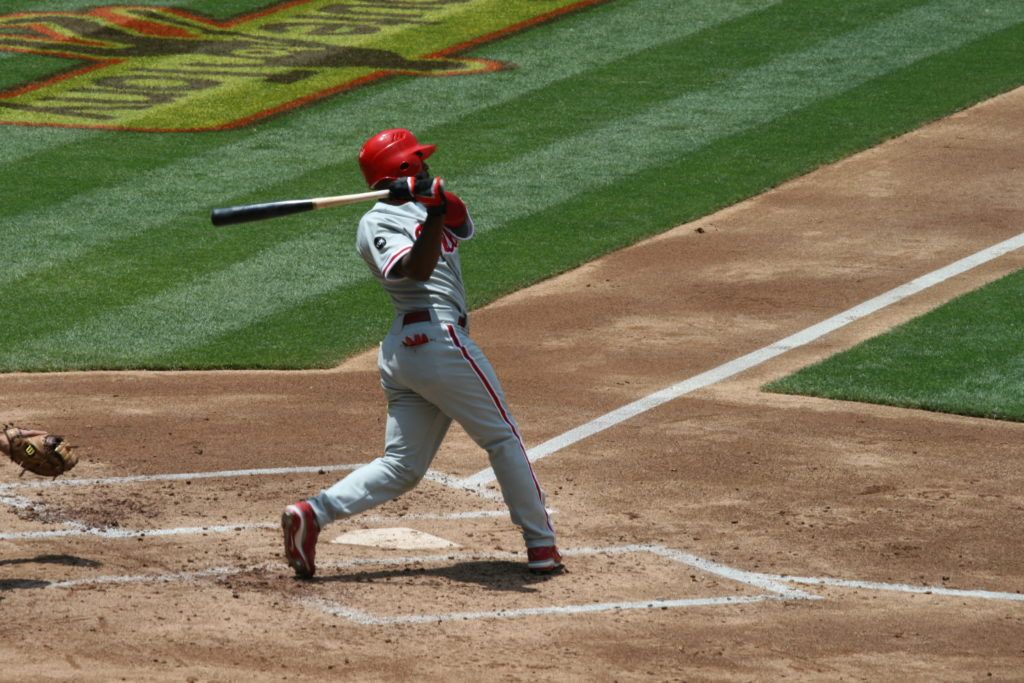
Rocky Colavito, a charismatic slugger who transcended the game of baseball to become a generational hero and one of the most beloved figures in Cleveland sports history, died on Tuesday at his home in Bernville, Pennsylvania. He was 91. His passing, attributed to pneumonia, was announced by the Cleveland Guardians, the team where Colavito forged an indelible bond with a passionate fan base that endured for decades.
“Our collective hearts ache at the passing of Rocky,” stated Bob DiBiasio, the Guardians’ senior vice president of public affairs, in a release that underscored the deep reverence held for the former outfielder. DiBiasio further described Colavito as “one of the most popular players in franchise history,” a sentiment echoed by countless fans across Northeast Ohio who mimicked his unique on-deck circle routine and batting stance.
Colavito’s career, spanning 14 Major League seasons from 1955 to 1968, was marked by formidable power, defensive prowess, and an uncommon rapport with the public. Yet, it was arguably a single, ill-fated trade in 1960 that cemented his legendary status and birthed “The Curse of Rocky Colavito,” an enduring narrative in Cleveland’s baseball lore. This retrospective explores the life and times of a player who, through his talent and genuine connection with fans, became far more than just a slugger.

1. A Fond Farewell: The Passing of a Baseball Icon
The baseball world mourned the loss of Rocky Colavito, who passed peacefully at his home in Bernville, Pennsylvania, surrounded by his family. His death on Tuesday at the age of 91 brought an end to a remarkable life and career that captivated fans across multiple franchises, but most notably in Cleveland, where his name remains synonymous with an era of baseball passion and profound local identity.
The Cleveland Guardians, through their senior vice president of public affairs, Bob DiBiasio, conveyed the organization’s deep sorrow. DiBiasio emphasized Colavito’s status as a “generational hero” and highlighted the pervasive influence of his on-field mannerisms, which were widely imitated by aspiring young ballplayers in the region. Colavito himself often expressed gratitude, stating, “I am thankful God chose me to play in Cleveland.”
Mark Sommer, Colavito’s biographer, confirmed that the nine-time All-Star died of natural causes, having dealt with assorted health problems in recent months that included hospitalizations and rehabilitation stints. Despite these challenges, Colavito and his wife, Carmen, recently celebrated their 70th wedding anniversary, a testament to a long and loving partnership.

2. The Bronx Beginnings: Early Life and Path to Professional Baseball
Rocco Domenico Colavito Jr. was born on August 10, 1933, in New York City, the son of a truck driver. His childhood was steeped in the rich baseball culture of the Bronx, where he developed an early affinity for the sport and grew up rooting for the legendary New York Yankees. His ultimate idol was the iconic Italian-American slugger, Joe DiMaggio, whose influence undoubtedly shaped Colavito’s own aspirations.
So serious was Colavito about pursuing a professional baseball career that he made the unconventional decision to drop out of Theodore Roosevelt High School after only his sophomore year. At the age of 16, he began playing semipro baseball, demonstrating an early commitment to his chosen path. However, Major League Baseball rules at the time prohibited him from signing a professional contract until his high school class had graduated.
Undeterred, Colavito filed an appeal with Commissioner Happy Chandler, a move that proved successful. Chandler granted him eligibility to turn professional after waiting just one year, allowing him to bypass the traditional waiting period. In 1951, after a tryout at Yankee Stadium, Colavito agreed to terms with the Cleveland organization, signing a minor-league contract for a $3,000 bonus, a modest sum that belied the immense talent he would soon display.
His professional journey began with the organization’s Class D Florida State League affiliate in Daytona Beach, where he immediately showcased his potential. During his debut season, he compiled a .275 batting average and a .492 slugging percentage, hitting 23 home runs. While playing at Class A Reading in 1953, Colavito met Carmen Perrotti, a professional dancer, whom he married after the 1954 season. For a wedding gift, Indians general manager Hank Greenberg gave the newlyweds tickets to Games 1 and 2 of the World Series at the Polo Grounds, a gesture Colavito fondly recounted years later, noting, “You know it always pays to get in good with your mother-in-law.”
3. The Rise of a Star: Early Cleveland Dominance and Style
Colavito’s ascent through Cleveland’s Minor League system was swift, culminating in his Major League debut on September 10, 1955, at Fenway Park. By 1956, he had established himself in the big leagues to stay, joining a Cleveland outfield that included future Hall of Famers Ralph Kiner and Larry Doby. His potential seemed limitless from the outset, and he quickly began to fulfill the promise.
In his rookie season, Colavito belted 21 home runs, finishing a respectable second in the American League Rookie of the Year balloting, behind White Sox shortstop Luis Aparicio. He followed this impressive debut with 25 homers the next year, consistently demonstrating the power that would define his career and captivate Cleveland’s fan base. This early success laid the groundwork for his rapid rise to elite status in the American League.
Colavito’s on-field presence was made all the more distinctive by his unique pre-batting rituals. He was known for his on-deck circle routine of kneeling, and then, as he stepped into the batter’s box, stretching his bat over his shoulders and pointing it at the pitcher. This idiosyncratic style became so popular that sandlot ballplayers across Northeast Ohio, including future Hall of Famer Jim Thome, would imitate it. Colavito himself explained his bat-pointing ritual as “a timing device where I was kind of saying ‘Put the pitch right there,’ because as a power hitter, you are looking for a ball to drive.”
Beyond his prodigious hitting, Colavito also left a significant impression with his defensive capabilities, particularly his throwing arm. Performing during an era when everyday outfielders were expected to be multidimensional, he possessed a “tremendous arm,” as left-hander Al Downing recalled, ranking “among the top three or four in the American League.” This all-around talent further solidified his reputation as a complete and exciting player.

4. A Historic Display of Power: The Four-Homer Game
On June 10, 1959, Rocky Colavito etched his name into baseball history with a performance that remains one of the sport’s most electrifying individual achievements. During Cleveland’s 11-8 victory over the Baltimore Orioles, Colavito became only the eighth player in Major League Baseball history to hit four home runs in a single game. This rare display of pure power captivated all who witnessed it and further burnished his growing legend.
His remarkable feat placed him in an exclusive club, joining pioneers like Bobby Lowe (1894) and Lou Gehrig (1932) as one of the few to accomplish the four-homer milestone. The sheer force behind his swings was palpable, as described by Al Downing, who frequently faced Colavito during his tenure with the Yankees in the 1960s. Downing observed, “I thought, every pitch, he seemed to be going for downtown. He swung that hard,” a testament to Colavito’s aggressive and powerful approach at the plate.
The game highlighted not only Colavito’s immense strength but also his ability to deliver under pressure. Each swing seemed aimed at the deepest parts of the ballpark, a relentless pursuit of extra bases and runs. This historic outing became a definitive moment in his career, showcasing the raw, unadulterated power that made him one of the most feared hitters of his generation and forever securing his place in baseball’s annals as a true slugger.

5. Peak Popularity and Performance: The Golden Years in Cleveland (1958-1959)
Following his strong rookie and sophomore campaigns, Rocky Colavito ascended to the game’s elite level in 1958 and 1959, years that marked the zenith of his initial tenure with the Cleveland Indians. In 1958, he belted 41 home runs and batted .303, leading the majors in slugging percentage. His stellar performance earned him a third-place finish in the American League MVP voting, firmly establishing him as one of the league’s premier power hitters.
The following season, 1959, was equally exceptional. Colavito led the American League with 42 home runs, tying with Harmon Killebrew, and continued to drive in more than 100 runs, finishing fourth in MVP voting. He was named an All-Star for the first time, a clear indication of his widespread recognition and talent. That year, Cleveland’s team spent 87 days in first place, ultimately finishing second in the AL, just five games behind the Chicago White Sox.
Colavito, who turned 26 that year, became a profound source of hope for Cleveland fans. They viewed him as the formidable force capable of leading the team to overwhelm the rest of the American League. His rapidly burgeoning popularity had a tangible impact beyond the field, contributing significantly to a dramatic increase in attendance at Cleveland Stadium, which soared from 663,805 in 1958 to an impressive 1,497,976 in 1959. His magnetic charisma was so undeniable that Time magazine featured him on its cover in the summer of 1959, gushing at how Colavito, with his handsome curly hair, “makes bobby-soxers squeal,” solidifying his status as a true baseball sensation.

6. The Unforgivable Swap: The 1960 Trade to Detroit
Despite his soaring popularity and elite performance, Rocky Colavito’s magical run in Cleveland came to an abrupt and controversial end. Just two days before the 1960 season opener, Indians general manager Frank Lane, famously dubbed “Trader” Frank, orchestrated a deal that would forever alter Colavito’s career trajectory and enrage the Cleveland fan base. Colavito was traded to the Detroit Tigers in exchange for Harvey Kuenn, the American League batting champion in 1959, who boasted a .353 average but significantly less power.
Lane’s motivation for the trade stemmed from a salary dispute; he was unhappy with Colavito’s request for an increase from $28,000 to $45,000. Although Colavito’s contract was renewed at $35,000, Lane regarded him as a “headache” and, in a now-infamous proclamation, stated that he had swapped “a hamburger for a steak.” This dismissive characterization of Colavito only intensified the anger and sense of betrayal felt by Cleveland fans, who perceived the deal as an insult to their beloved slugger.
For most Cleveland fans, the trade felt like a profound betrayal, leaving them feeling “like dead meat.” A deeply personal bond had been severed, and Lane was never forgiven for casting off Colavito in what is widely regarded as the worst trade in club history. The decision had immediate and far-reaching consequences for the franchise, as the Indians promptly sank into mediocrity, drawing only 950,985 fans and finishing 76-78 in 1960, a staggering 21 games behind the Yankees. The trade’s impact extended beyond mere statistics, creating a psychological wound that would plague the team for decades and give rise to the legend of the “Curse of Rocky Colavito.” Colavito himself recounted his shock and disappointment at being traded, learning the news on first base during an exhibition game and then having to fly back to Cleveland with his new team for the opener, an “awkward” experience he confessed he still didn’t understand decades later.

7. A New Home, Same Power: Success with the Detroit Tiger
The shocking trade to Detroit in 1960 marked a new chapter in Rocky Colavito’s career, but it did little to diminish his prodigious power or his ability to capture the hearts of a new fan base. Arriving in Detroit just two days before the start of the season, Colavito quickly established himself as a wildly popular and powerful slugger for the Tigers, becoming their cleanup hitter and the biggest home run threat for the organization since Hank Greenberg decades earlier.
During his four years with the Tigers, Colavito maintained his formidable presence at the plate, slugging an impressive 139 home runs and knocking in 430 runs, averaging 35 homers and 107 RBIs per season. His impact was immediate and substantial, demonstrating that the trade, while devastating to Cleveland, had brought Detroit a consistent source of offensive firepower. Youngsters on sandlots throughout metro Detroit, much like those in Cleveland before them, routinely imitated his distinctive on-deck and batter’s box rituals, cementing his status as a fan favorite in his new city.
The 1961 season proved to be the best of his 14-year career, as Colavito belted 45 homers and drove in 140 runs. That year, the Tigers, loaded with talent including Colavito, Norm Cash (who hit .361), Al Kaline, and a solid pitching staff featuring Jim Bunning and Frank Lary, fiercely battled the New York Yankees for the pennant throughout the year, only for the Bronx Bombers to pull away in early September. Meanwhile, the player he was traded for, Harvey Kuenn, played only one season for Cleveland before being traded to the San Francisco Giants, finishing his career with a .303 lifetime batting average, a respectable mark, but one that ultimately fell “far from matching the production of Rocco Domenico Colavito.”

8. The Enduring Shadow: The ‘Curse of Rocky Colavito’ Takes Hold
The controversial trade of Rocky Colavito to the Detroit Tigers in 1960 left an immediate and profound void in Cleveland. For many fans, the departure of their beloved slugger was not merely a transaction but a deeply personal betrayal, severing a bond forged through years of electrifying performances and genuine connection. The Indians’ performance suffered almost immediately, as the team concluded the 1960 season with a 76-78 record, a stark decline from their competitive 1959 campaign, finishing a distant 21 games behind the Yankees. This downturn in fortunes coincided with a significant drop in attendance, further underscoring the fan base’s deep dissatisfaction.
The widespread anguish and frustration among Cleveland’s baseball faithful soon coalesced into an enduring narrative: “The Curse of Rocky Colavito.” This legend, famously chronicled by Cleveland-based sportswriter Terry Pluto in his 1993 book, theorized that the trade initiated a prolonged period of futility for the franchise. From 1960 to 1993, a span of 34 years, the Indians finished within 11 games of first place only once, during the strike-shortened 1981 season. It became a pervasive explanation for the team’s struggles, a haunting specter over Cleveland baseball.
While the team eventually experienced resurgent periods, reaching the World Series in 1995, 1997, and 2016, the ultimate outcome each time was defeat. These near-triumphs, followed by heartbreaking losses, only served to reinforce the mystique of the “curse” in the minds of many, perpetuating the idea that the city’s championship aspirations were somehow thwarted by the long-ago transaction. The trade, therefore, transcended a mere exchange of players to become a significant psychological anchor in the franchise’s history.
Colavito himself, in later years, addressed the widely held belief, asserting that he never placed a hex on the team. Instead, he pointed to the architect of the trade, stating simply, “Frank Lane did.” This perspective highlights the enduring impact of a decision that profoundly reshaped the landscape of Cleveland baseball, creating a legacy that extended far beyond the statistical outcomes of a single season and cementing Colavito’s name in local lore as both a hero and a symbol of what was lost.

9. A Well-Traveled Slugger: From Detroit to Kansas City
Rocky Colavito’s four-year tenure with the Detroit Tigers, following his controversial trade from Cleveland, was marked by sustained offensive firepower and a rapid ascent to fan favorite status in his new city. As Detroit’s cleanup hitter, he delivered on the promise of his power, slugging 139 home runs and driving in 430 runs, averaging an impressive 35 homers and 107 RBIs per season. His 1961 campaign stood out as the pinnacle of his 14-year career, where he belted 45 homers and knocked in 140 runs, helping the Tigers battle the formidable New York Yankees for the pennant until early September.
Just as in Cleveland, Colavito’s magnetic personality and distinctive on-field rituals captivated a new generation of fans. Youngsters on sandlots across metro Detroit enthusiastically mimicked his pre-batting routine, which included stretching his bat over his shoulders and pointing it at the pitcher. This genuine connection with the public underscored his rare appeal, making him a beloved figure in an era where such bonds were deeply cherished by baseball communities.
However, Colavito’s time in Detroit, though productive, eventually concluded in another surprising move. After the 1963 season, the Tigers traded Colavito, pitcher Bob Anderson, and $50,000 to the Kansas City Athletics. In return, Detroit acquired infielder Jerry Lumpe and pitchers Dave Wickersham and Ed Rakow. This transaction, unexpected by many Detroit fans, marked the end of his successful, albeit relatively brief, stint with the club.
The Tigers’ stated reason for the trade was the perceived readiness of rookie Willie Horton to take over in left field, signaling a shift towards younger talent. Yet, a significant underlying factor was a “bitter contract dispute” between Colavito and Jim Campbell, who was in his first year as Detroit’s general manager, a disagreement that had lingered into the 1963 spring training. Following this move, Colavito played one season for the Kansas City Athletics, where he continued to demonstrate his power, hitting 34 home runs and driving in 102 runs.

10. The Prodigal Son Returns: A Costly Reunion in Cleveland
Following his single season with the Kansas City Athletics, Rocky Colavito’s baseball journey brought him back to the city that had adopted him and that he openly declared he “never wanted to leave.” In January 1965, Cleveland reacquired Colavito as part of a complex three-team trade involving the A’s and the Chicago White Sox. This return was met with immense enthusiasm from the Cleveland fan base, who yearned for the return of their charismatic slugger, seeing it as a potential remedy for the struggles that had plagued the franchise since his original departure.
Yet, the cost of bringing Colavito back proved almost as detrimental as the initial trade that sent him away. To reacquire him, Cleveland parted with promising talent, most notably left-hander Tommy John and outfielder Tommie Agee. John, who had won just two games for Cleveland, would go on to amass an astounding 288 Major League victories over his distinguished career. Agee, meanwhile, captured the 1966 American League Rookie of the Year Award with the White Sox and played a pivotal role in the New York Mets’ improbable surge to the 1969 World Series title, cementing his own legacy as a dynamic player. Many experts retrospectively viewed this reacquisition as “almost as bad” for the Indians as the Kuenn swap.
Regardless of the long-term cost to the franchise, Colavito himself was “overjoyed to return to where it all began for him.” He immediately responded to the fervent fan support with a stellar performance in 1965, leading the American League in RBIs with 108 and walks with 93. He also demonstrated remarkable durability, playing in all 162 games that season, a testament to his commitment and physical conditioning.
Beyond his offensive contributions, Colavito achieved a notable defensive milestone in his return year, becoming the first outfielder in American League history to finish a season with a perfect 1.000 fielding percentage. His magnetic appeal was further evidenced by a significant surge in attendance at Municipal Stadium, which increased by nearly 300,000 fans, highlighting the enduring power of his connection with the Cleveland community. He consistently reiterated his deep affection for the city, once proclaiming during a 2013 visit, “I always felt this is my town. I love Cleveland. It’s my favorite town in the world. That’s the God’s honest truth. I’m not blowing smoke to anybody, because I don’t have to.”

11. Defensive Prowess and Pitching Surprises: The Complete Player
While Rocky Colavito’s legacy is predominantly defined by his prodigious power at the plate, his impact on the field was far more comprehensive, extending to exceptional defensive capabilities. During an era when everyday outfielders were expected to be multidimensional, Colavito distinguished himself with a formidable throwing arm. Left-hander Al Downing, who frequently faced Colavito, recalled that he had a “tremendous arm,” ranking it “among the top three or four in the American League.” This powerful arm was a significant asset, frequently lauded by opponents and teammates alike for its strength and accuracy from the outfield.
Beyond his consistent excellence in right field, Colavito also possessed a rarely seen versatility that allowed him to take the mound. These were not merely ceremonial appearances in lopsided games, as is sometimes seen today, but “legitimate relief appearances.” He pitched three scoreless innings for Cleveland in 1958, demonstrating an unexpected skill set that added another layer to his already impressive profile as a player.
His most memorable pitching outing occurred late in his career, on August 25, 1968, while playing for the New York Yankees. In the first game of a doubleheader against the Detroit Tigers at Yankee Stadium, Colavito took the mound in relief and delivered 2 1/3 innings of one-hit, scoreless ball. This remarkable performance not only showcased his enduring athleticism but also earned him a rare pitching victory as the Yankees rallied to win 6-5. This feat made him the last non-pitcher to earn a win on the mound until Brent Mayne of the Colorado Rockies matched it in 2000, underscoring the uniqueness of his achievement.
Furthermore, in the nightcap of that same doubleheader, playing right field, Colavito further demonstrated his all-around talent by slamming a home run off Mickey Lolich, contributing to a Yankees sweep. His ability to perform at a high level in multiple facets of the game, combining power hitting with a strong defensive arm and even effective pitching, solidified his reputation as a complete and exciting player, a true embodiment of the multidimensional athletes that defined baseball in his era.

12. Twilight Years and Career Statistics: A Distinguished Career Concludes
After his celebrated return to Cleveland, Rocky Colavito remained with the Indians until mid-1967 when he was traded to the Chicago White Sox. This marked the beginning of the twilight years of his illustrious career, which saw him play for three different teams in his final two seasons. He concluded his journey through Major League Baseball in 1968 with brief stints, first with the Los Angeles Dodgers and then, fittingly, with his hometown New York Yankees, the team he grew up rooting for in the Bronx.
His debut as a Yankee in July 1968 was a memorable one, as he connected for a three-run homer in his second at-bat against the Washington Senators. However, his overall tenure with the Yankees was brief and less statistically impactful, batting only .220 with five home runs. Unsure about his future in the game, Colavito requested his release from the Yankees once the 1968 season concluded, and upon its granting, he made the decision to retire, bringing an end to a remarkable 14-year Major League career.
Over the course of those 14 seasons (1955-1968), Colavito amassed impressive career statistics that firmly established him as one of the game’s premier power hitters. He finished with 374 home runs, a total that, at the time of his retirement, placed him third on the American League’s all-time list among right-handed hitters, behind only Jimmie Foxx and Harmon Killebrew. He also collected 1,159 RBIs, recorded 1,730 hits, and maintained a career batting average of .266, complemented by a .359 on-base percentage and a .489 slugging percentage, resulting in an .848 OPS+. His overall contributions translated to a respectable 44.5 WAR (Wins Above Replacement).
Colavito was a model of consistency and durability through his prime, exceeding 20 home runs in a season for an impressive 11 consecutive years. He topped the 40-homer mark three times, including a career-high of 45 in 1961 and an American League-leading 42 in 1959. Throughout his career, he made nine All-Star appearances and finished in the top five of American League MVP voting on three occasions, including a third-place finish in 1958 and a fourth-place finish in 1959. His consistent production, particularly his formidable power, left an indelible mark on the game.

13. Beyond the Foul Lines: Life After Playing
Upon retiring from his playing career, Rocky Colavito remained intimately connected to the game that had defined so much of his life. He transitioned into a new role as a coach for the Cleveland Indians, serving on the club’s staff from 1976 to 1978, sharing his vast knowledge and experience with a new generation of players. He later extended his coaching career to the Kansas City Royals, where he served as their hitting coach, further cementing his commitment to baseball.
One of his most notable post-playing moments occurred during his coaching stint with the Royals, during the infamous “pine tar game” at Yankee Stadium in 1983. In a highly contentious moment, Colavito was among the Royals personnel ejected from the game after an umpire nullified a George Brett home run due to excessive pine tar on his bat. Colavito, ever passionate and protective of his players, had attempted to prevent the umpire from taking the bat, illustrating his enduring competitive spirit even from the dugout.
Outside the professional baseball arena, Colavito engaged in a diverse array of ventures. He operated a mushroom farm, showcasing a surprising entrepreneurial side, and also worked as a sales executive for a temporary staffing company. In his retirement years, he found particular enjoyment in hunting, often spending time at his 90-acre deer camp near his home in Bernville, Pennsylvania, embracing a quieter life connected to nature.
Beyond the statistics and the dramatic moments, Colavito’s character left a profound impression on those who knew him. Former Indians second baseman and Giants broadcaster Duane Kuiper fondly recalled that the most important lessons Colavito imparted were not about hitting, but about professionalism and respect. Kuiper noted, “The respect he had for all the people in the clubhouse, for the people who worked at the park, for coaches — that’s what I learned from him.” Similarly, Willie Horton, the Detroit native who eventually replaced Colavito in left field, recounted how Colavito had taken him “under his wing” as a young player and helped him navigate the challenges of becoming a Major Leaguer, highlighting his thoughtful mentorship.

14. An Enduring Legacy: Admiration and Immortalization
Rocky Colavito’s passing at 91 brought an end to a life marked by baseball greatness and an unparalleled connection with fans, particularly in Cleveland. His popularity was so profound that even decades after his controversial trade, the chant “Don’t knock the Rock!” remained a beloved sentiment among the city’s faithful. He was consistently referred to as a “generational hero” and “one of the most popular players in franchise history,” sentiments echoed by Cleveland Guardians senior vice president Bob DiBiasio and countless admirers.
His legacy was formally recognized with his induction into the Cleveland Guardians Hall of Fame in 2006, a testament to his indelible impact on the franchise. The organization continued to honor him, celebrating his 80th birthday in 2013 at Progressive Field, where he donned his old No. 6 and threw out the ceremonial first pitch, a moment cherished by fans and Colavito alike. During this visit, he reiterated his unwavering love for Cleveland, expressing profound gratitude for the city that had embraced him so completely.
The ultimate tribute to his enduring connection with the city came in 2021, on his 88th birthday, when a statue in his honor was unveiled in Cleveland’s Little Italy neighborhood. The event drew hundreds of fans, along with former teammates like Willie Horton and Denny McLain, who traveled to be with him, underscoring the deep affection and respect he commanded. The statue stands as a permanent symbol of his place in Cleveland’s heart, a visual reminder of the slugger who meant so much more than just his statistics.
When asked in a 2010 interview how he wished to be remembered, Colavito’s voice reportedly cracked with emotion. He dismissed the idea of being recalled solely for his on-field heroics, such as hitting 45 homers and 140 RBIs in a season. Instead, with genuine humility, he expressed a deeper aspiration: “I hope people will say that, ‘Rocky was a hell of a nice guy and a good human being.'” This sentiment perfectly encapsulates the essence of Rocky Colavito – a man whose immense talent was matched only by his profound humanity and the genuine bond he cultivated with every fan and teammate.
The passing of Rocky Colavito leaves an undeniable void in the annals of baseball history, yet his story, rich with extraordinary talent, poignant narratives, and an unwavering connection with the public, will continue to resonate for generations to come. He was more than a slugger; he was a symbol of an era, a charismatic figure who transcended the game to become a deeply cherished part of American culture. His life reminds us that true legends are built not just on monumental achievements, but on the enduring impact of a good human being. From the sandlots of the Bronx to the hallowed halls of fame, Rocky Colavito’s legacy is secure, etched forever in the hearts of those who cheered for “The Rock.”




